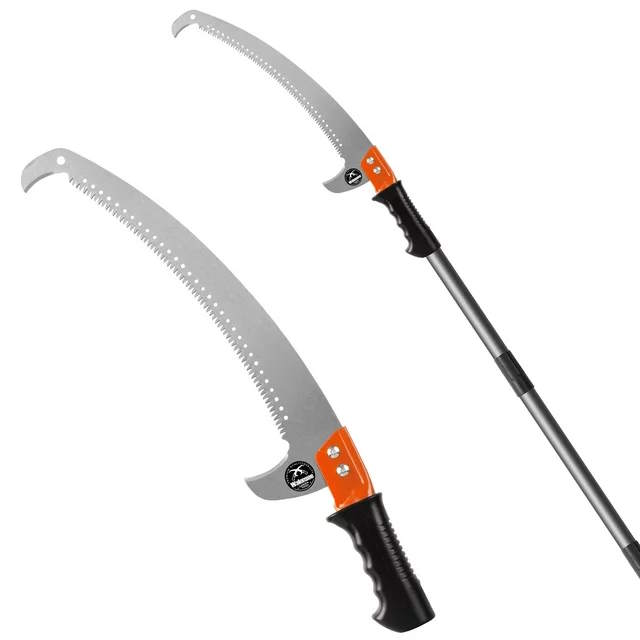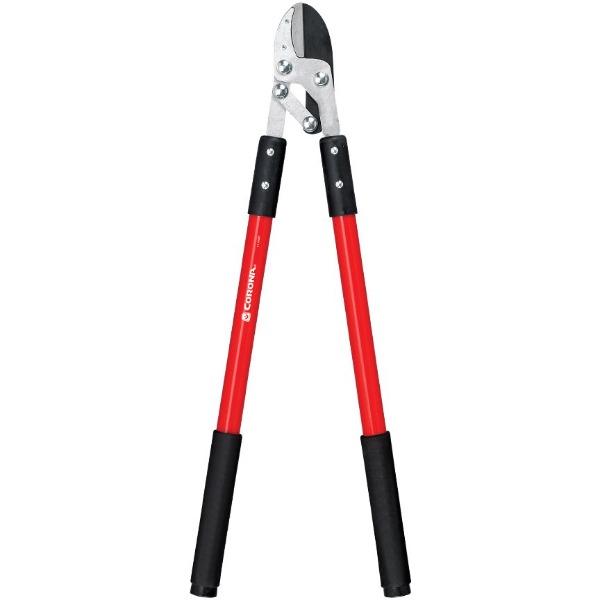There's still time to prune deciduous trees this month – expert trimming advice for 9 of the most popular backyard trees
These trees will benefit from pruning in February with our handy guide
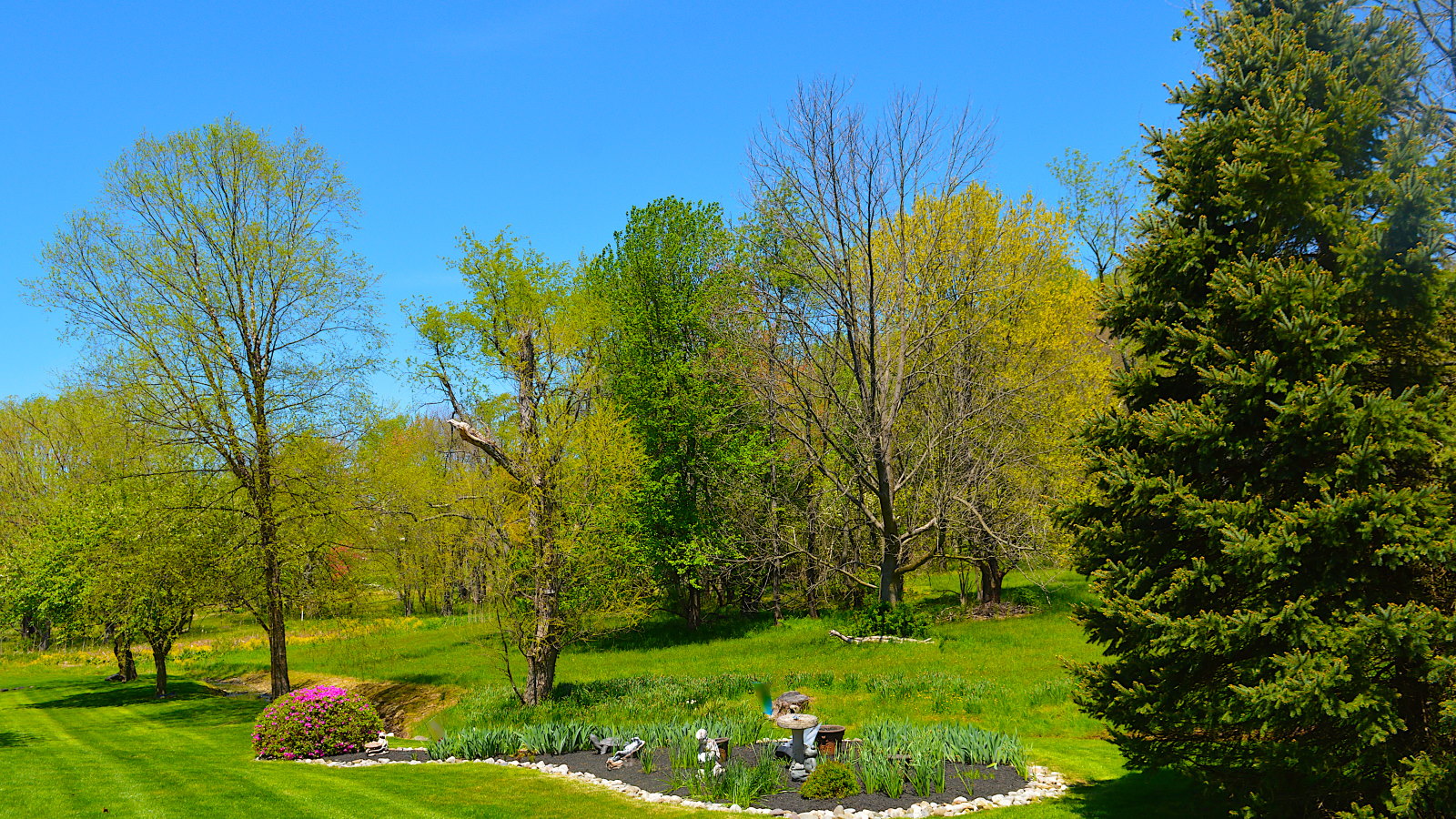

Dormancy from late fall to early spring is the best time to prune many trees, but not all. This month can be an ideal time to head out with the tools and get trimming, so this guide outlines some of the popular backyard trees to prune in February.
Pruning helps to keep any tree attractive, healthy and vigorous. Whether grown for dramatic foliage, stunning bark, or tasty fruits, pruning is an important part of any maintenance plan.
Understanding when to prune trees prevents you from making any mistakes that risk the ultimate health of any tree. To help you keep trees healthy and looking their best, we look at nine trees to prune in February and provide some helpful trimming tips for each.
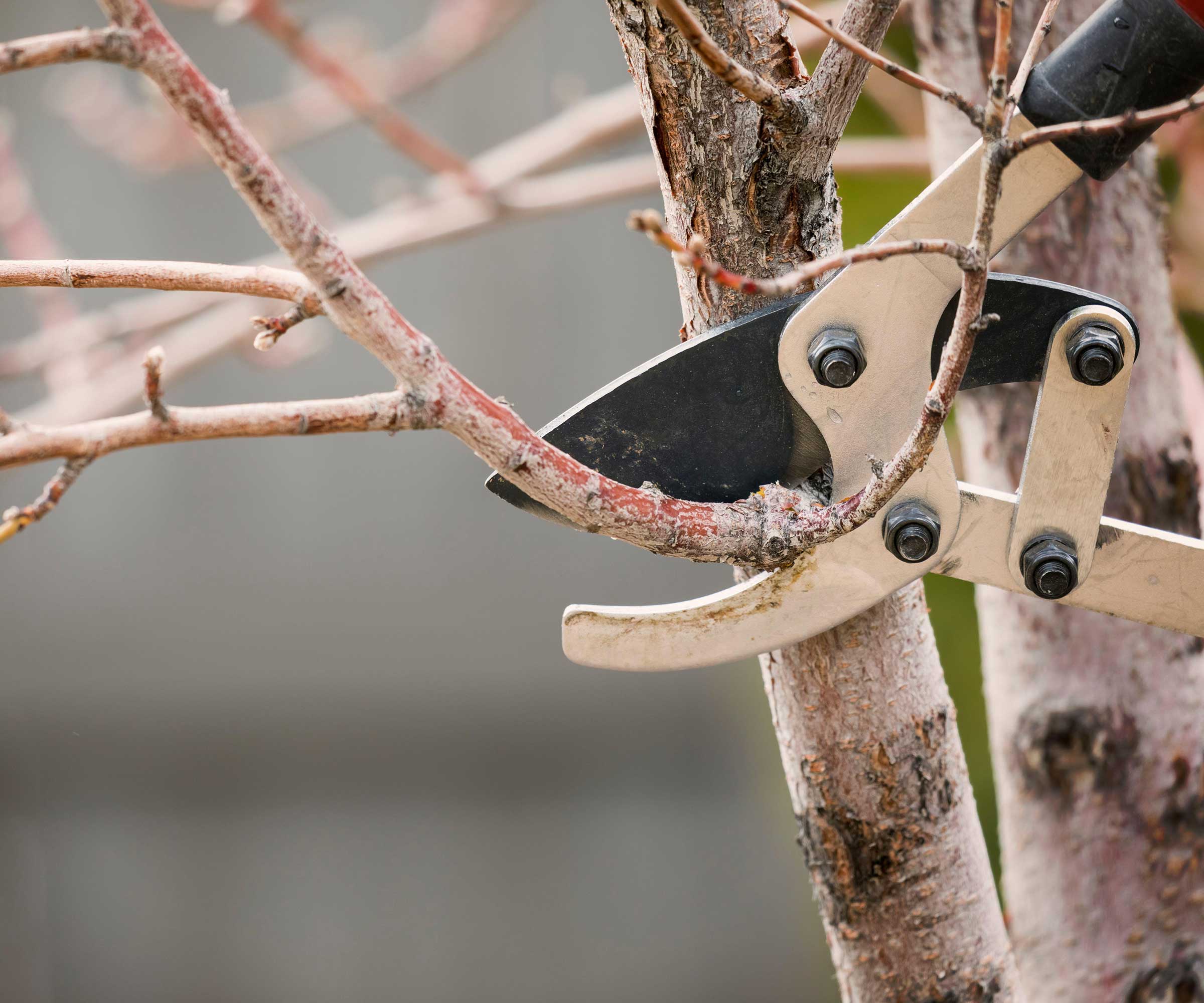
Tools for pruning trees in February
The garden tools for pruning trees in February include pruning shears, loppers, a pole pruner, and a pruning saw. All pruning tools must be clean and sharp to make cuts that are easier to heal and avoid spreading disease. A sturdy ladder or pole saw can help you reach higher branches, however, very large trees should be left for professional arborists to prune.
With all that in mind, here are nine trees to prune in February:
Apple
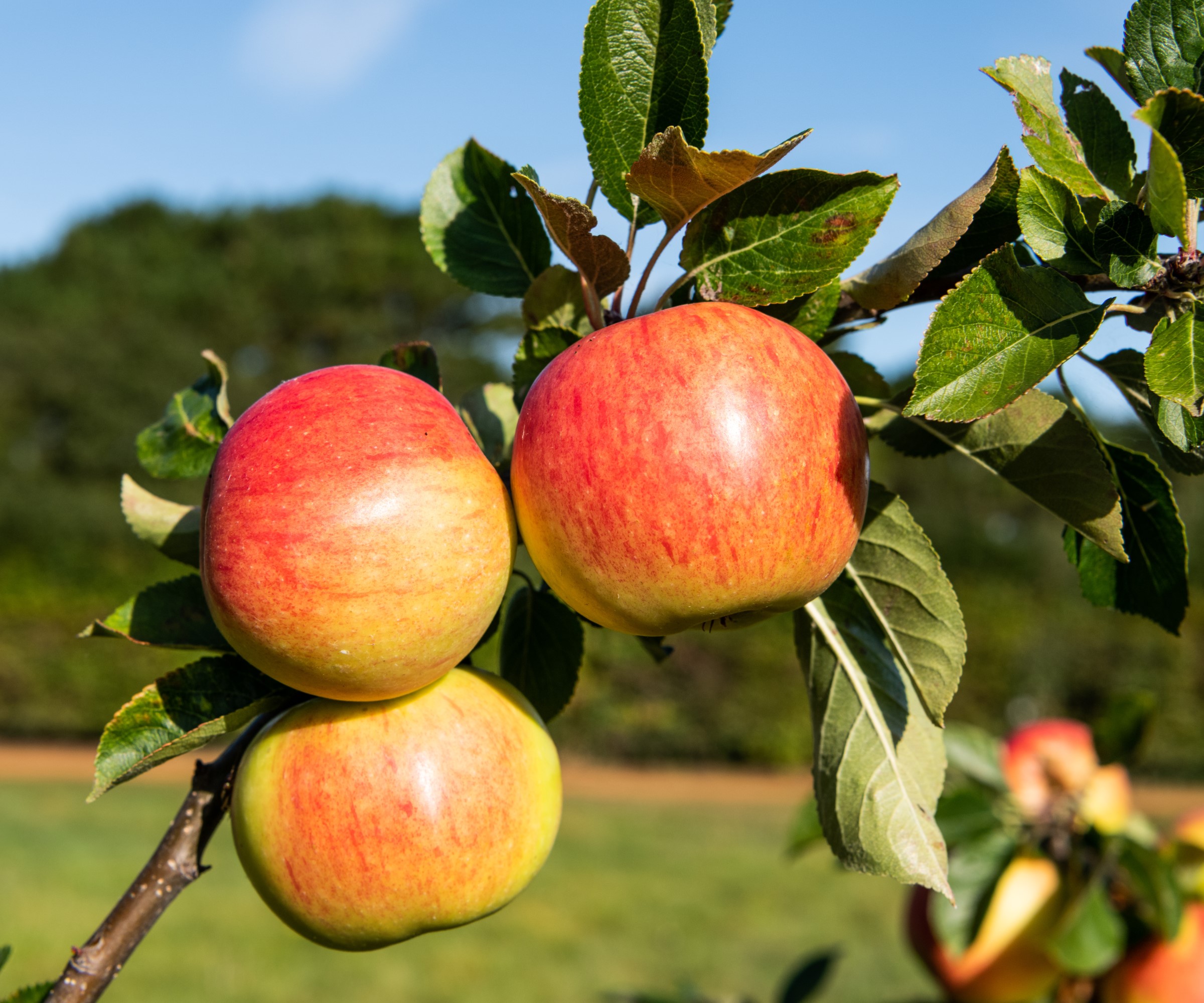
Some of the most popular fruit trees are pruned in winter during dormancy. In many US hardiness zones, February is often the last month to trim before the trees start growing again.
The fruit trees to prune in winter include apples, pears, quinces, mulberries, and medlars. However, do not prune stone fruit trees this month, they are not pruned during dormancy and it would be a fruit tree pruning mistake to trim in February.
Some of the key steps of winter fruit tree pruning include removing dead, damaged, and diseased branches, crossing or rubbing shoots, and pruning watershoots and suckers. It also involves shortening the previous year’s growth to encourage fruiting spurs.
Citrus
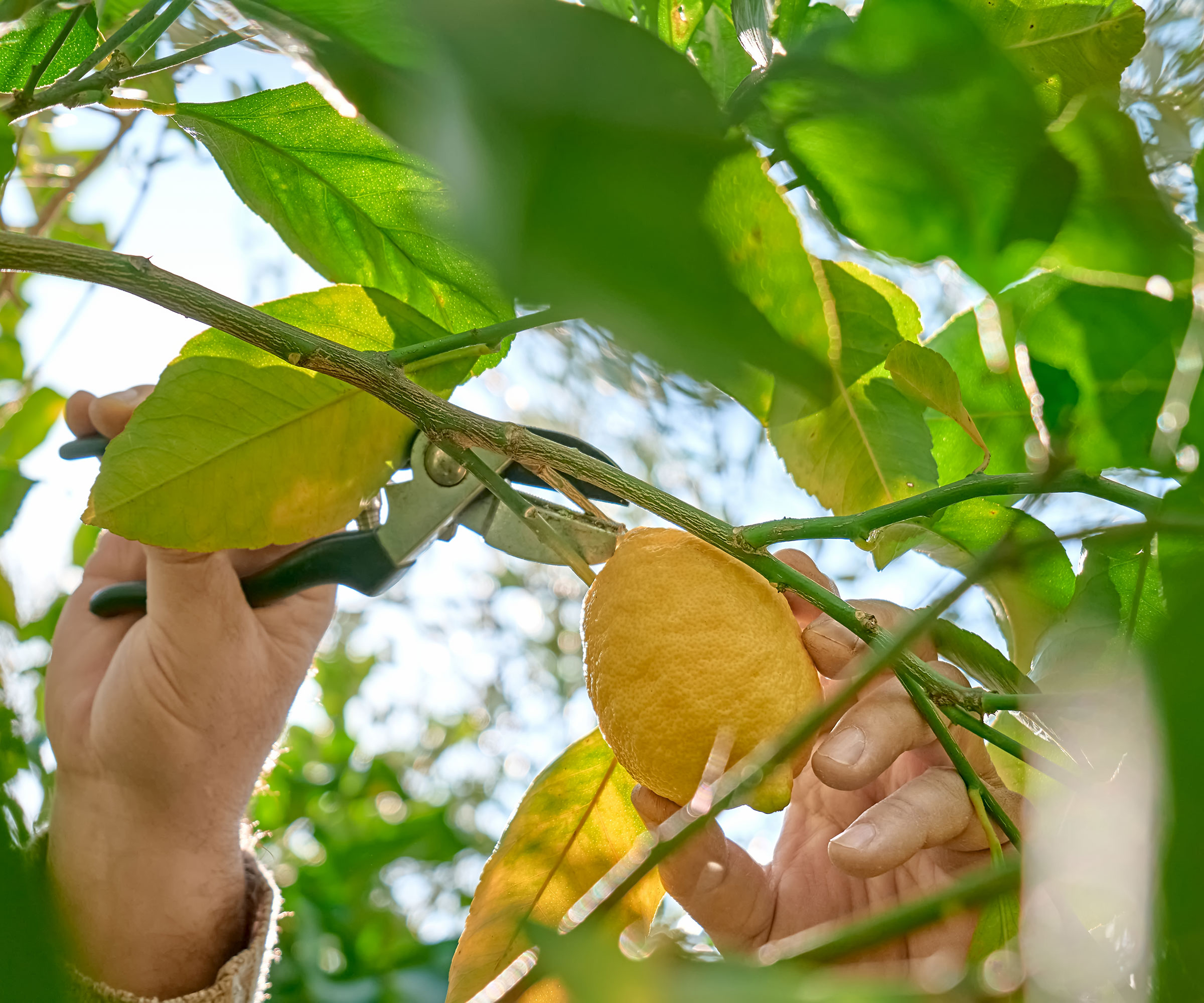
Late winter is a good time to prune citrus trees, just before they start producing new growth. The plant often does not need lots of pruning, however, some gentle trimming at least once a year can help them look their best. Whether you are pruning a lemon, lime, or orange tree, giving them some attention also keeps the tree healthy and productive.
Use clean and sharp pruning shears and concentrate on pruning out dead or damaged branches and thinning overcrowded areas. This will improve sunlight penetration and air circulation, which keeps the canopy healthy and helps with ripening fruit.
Eucalyptus

Eucalyptus are great evergreen trees that undoubtedly add interest to any space with their unique leaves and decorative peeling bark. However, they can grow large and require pruning to prevent them from outgrowing their space.
The ideal time to prune eucalyptus trees is in late winter or early spring, trimming in February or March will keep the tree healthy. It can heal cuts quickly when the sap is rising and it starts growing again, lessening the risk of silver leaf fungus getting into pruning wounds.
An established eucalyptus needs dead, damaged, or crossing branches removed from the canopy and any low-hanging side branches pruned off. Pollarding or coppicing eucalyptus can be done in small backyards.
Fig

Fig trees are fast-growing fruit trees that need pruning annually to keep them healthy and give you a great harvest. The best time to prune fig trees is when they are dormant in late winter, with February an ideal time to get out and trim. Don’t wait too long, pruning in spring or summer is a fig-growing mistake as the trees bleed sap.
Remove any dead, diseased, damaged, or crossing branches and congested areas to open up the tree’s framework and allow for lots of air and light penetration. Older, established figs may benefit from one or two of the largest branches getting removed annually. Leaving a two-or-three-inch stub will encourage healthy new replacement growth.
Katsura
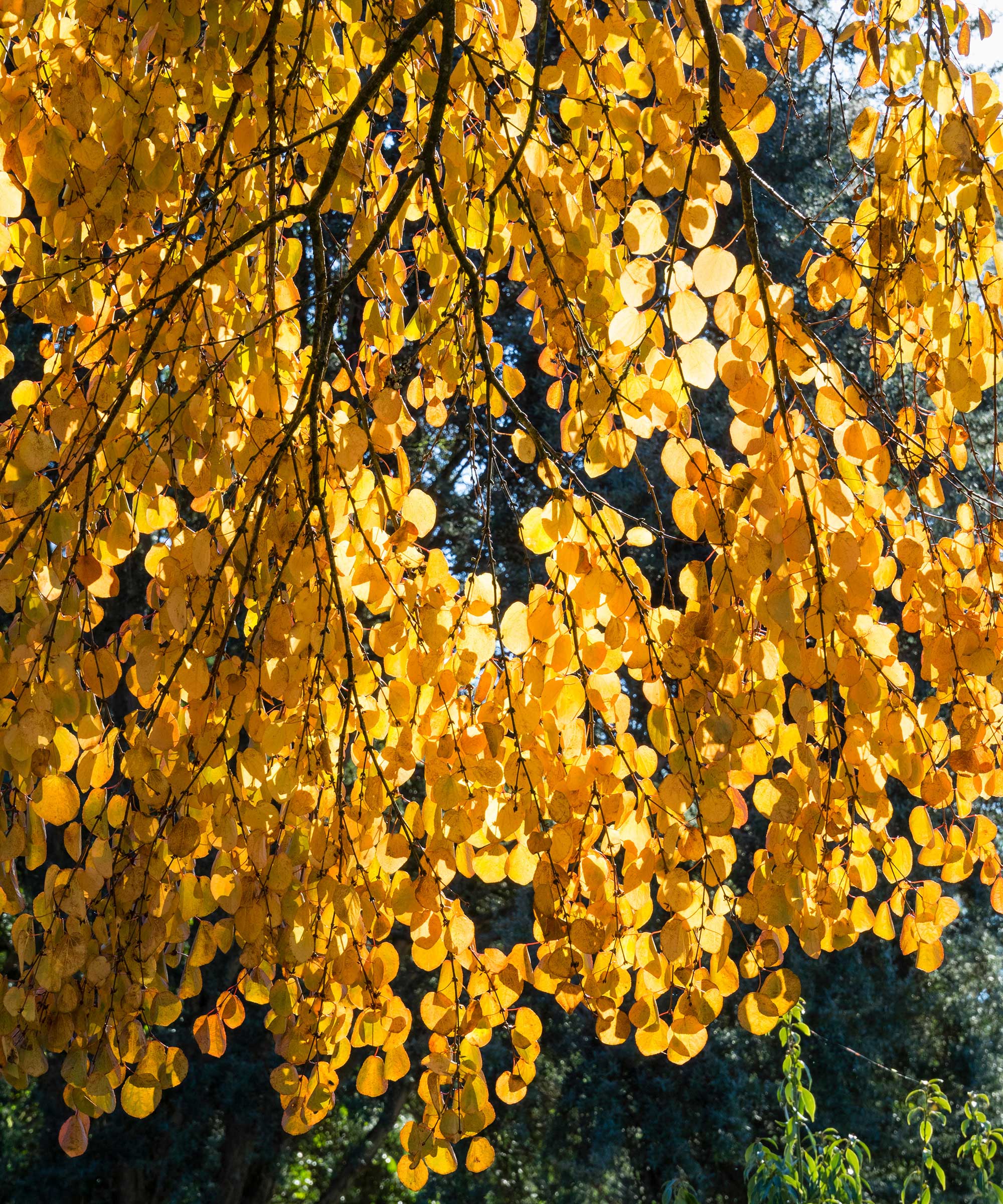
Katsura is a spectacular tree for fall color, when its heart-shaped leaves turn gold, orange, and scarlet. It is a deciduous tree native to China and Japan and also one of the best trees for shade.
The tree requires little pruning but, when it does need trimming, it should be done in late winter or early spring.
The small-scale tidy-up of a katsura tree involves removing dead or damaged shoots and trimming out crossing or crowded branches. Any low-hanging branches can be removed to lift the canopy, while suckers want to be removed from the base.
Parrotia
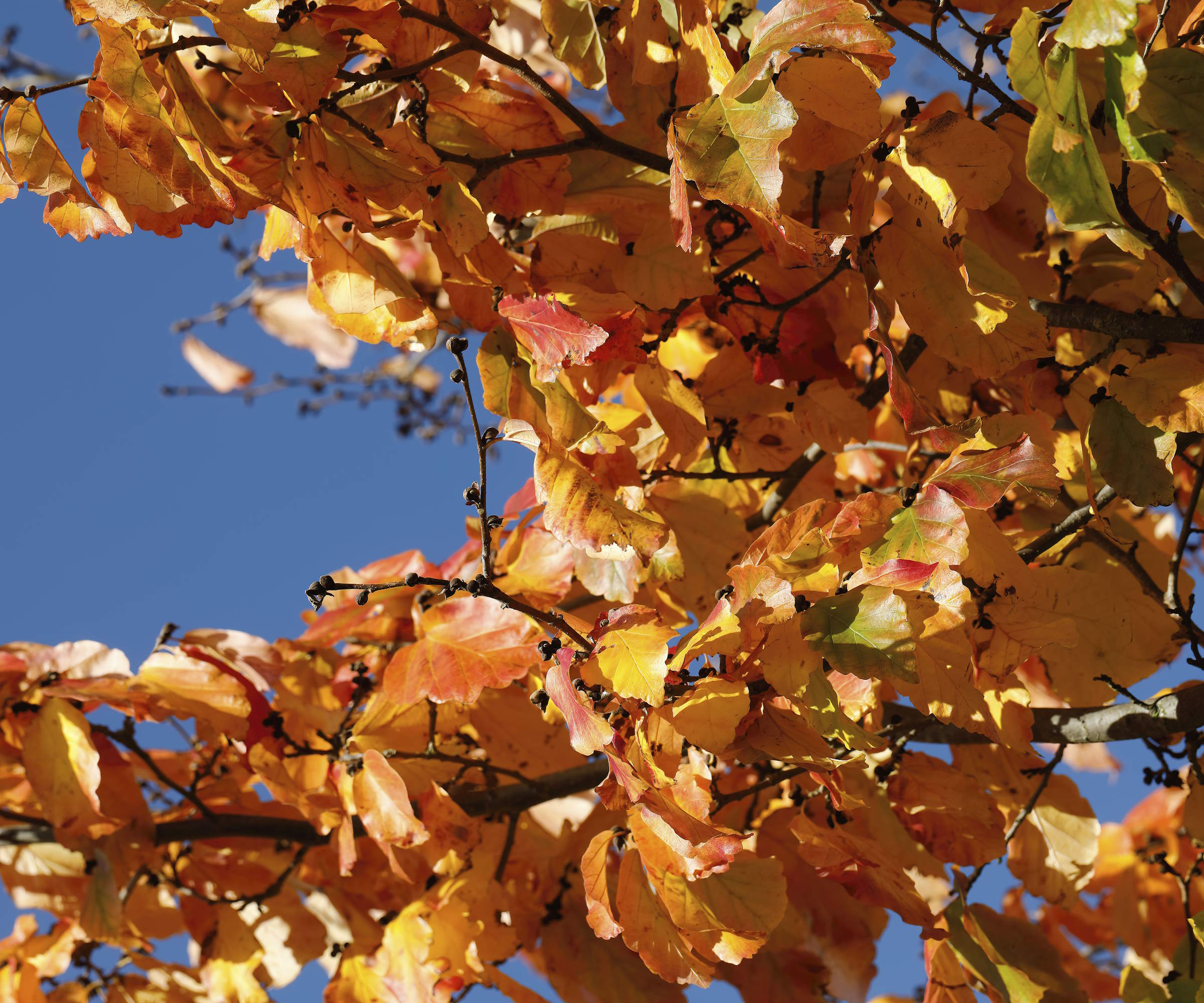
Parrotia persica, or Persian ironwood, is a deciduous tree with year-round interest. They are popular thanks to a stunning display of fall color, distinctive peeling bark, and red flowers in late winter and early spring.
The foliage is spectacular as it emerges red in spring, turns green in summer, and finally transforms into shades of orange and red in the fall. Parrotia make great trees for small yards and they are also drought-tolerant trees.
Trees need very little pruning, but any trimming should be done in early spring after the tree has finished blooming. Only light pruning is required, such as removing dead or diseased branches and shortening branches to raise the canopy. Do not prune parrotia hard as it stresses the tree and they struggle to recover.
Pawpaw
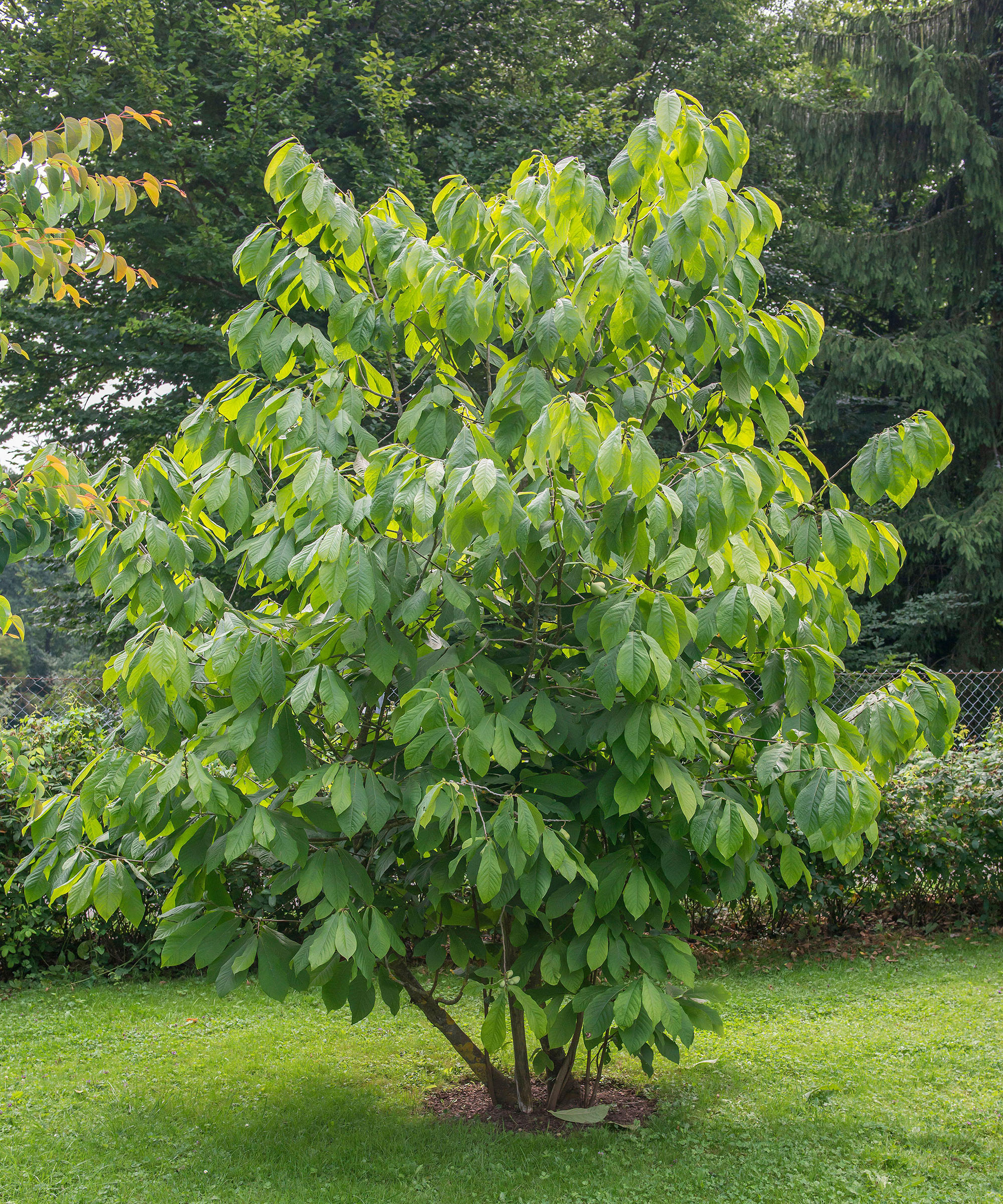
Pawpaw trees are grown primarily for the large, distinctive fruits, but also offer glorious large, lush, and shiny foliage that give the tree a tropical vibe. Pawpaws are native trees to the eastern United States and need little pruning throughout their lifetime. When they do need pruning, late winter is the optimal time. Timing the trimming before new growth in spring reduces shock and ensures the wounds heal quickly.
To prune pawpaw trees, remove damaged or diseased branches before focusing on shaping the tree. Pawpaws are usually grown with a single central leader but can work as multi-stemmed trees. If you opt for the former, remove less vigorous branches. Multi-stemmed pawpaws need thinning to prevent overcrowding and boost air and light penetration.
Rowan
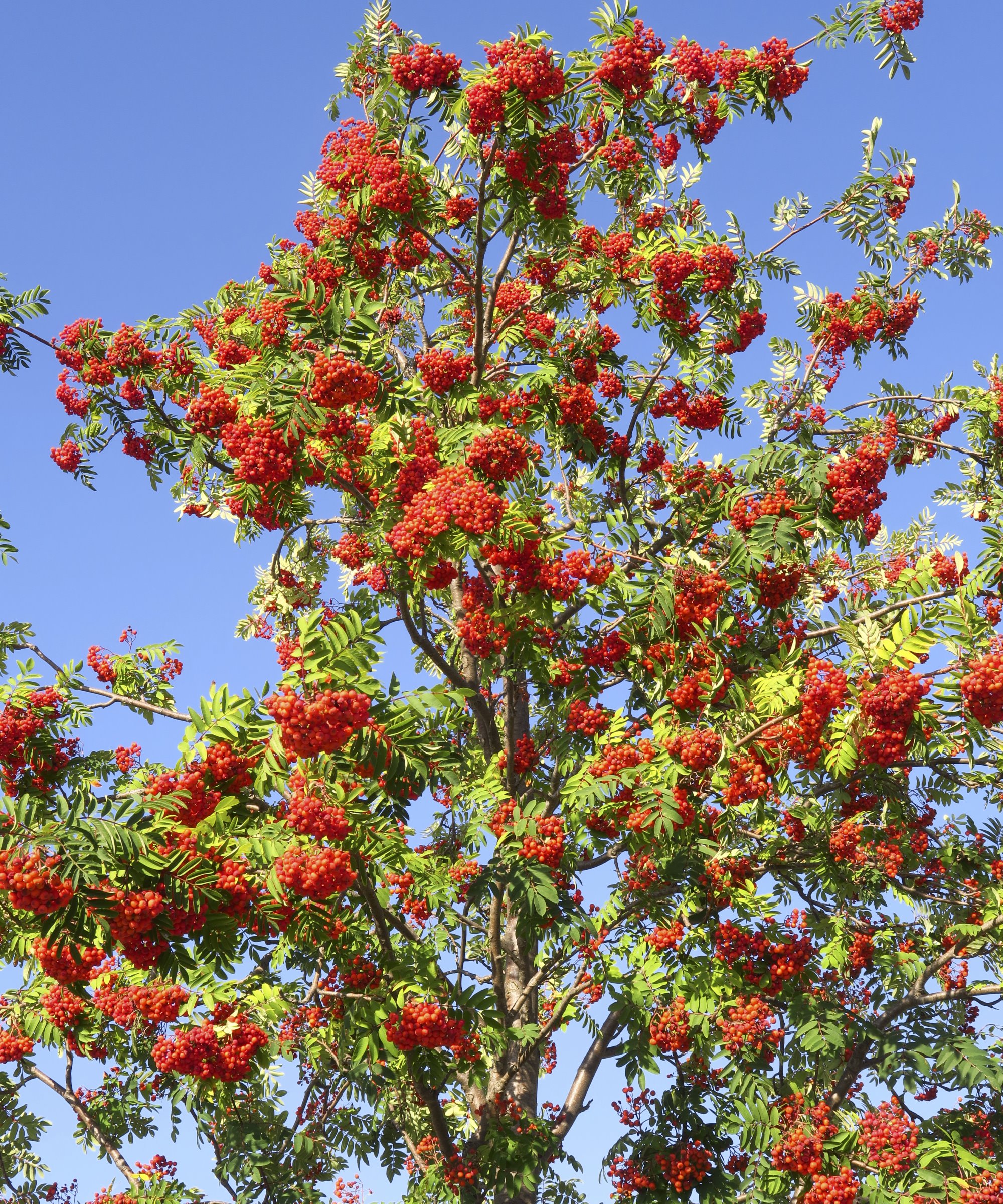
Rowan trees, known as sorbus, are compact trees with feathered leaves and red berries in fall and winter. The time to prune rowan trees comes in late winter and this is optimal to avoid leaving the tree susceptible to pests and diseases from sap loss caused by pruning when the tree is in active growth in spring or summer.
Rowan are low-maintenance trees for a backyard that do not require lots of complicated pruning. Remove dead and diseased branches along with overcrowded and inward-growing branches to open up the canopy. Gentle pruning can then be done to create a natural shape before, finally, any suckers on the trunk or at the base are removed.
Sweetgum
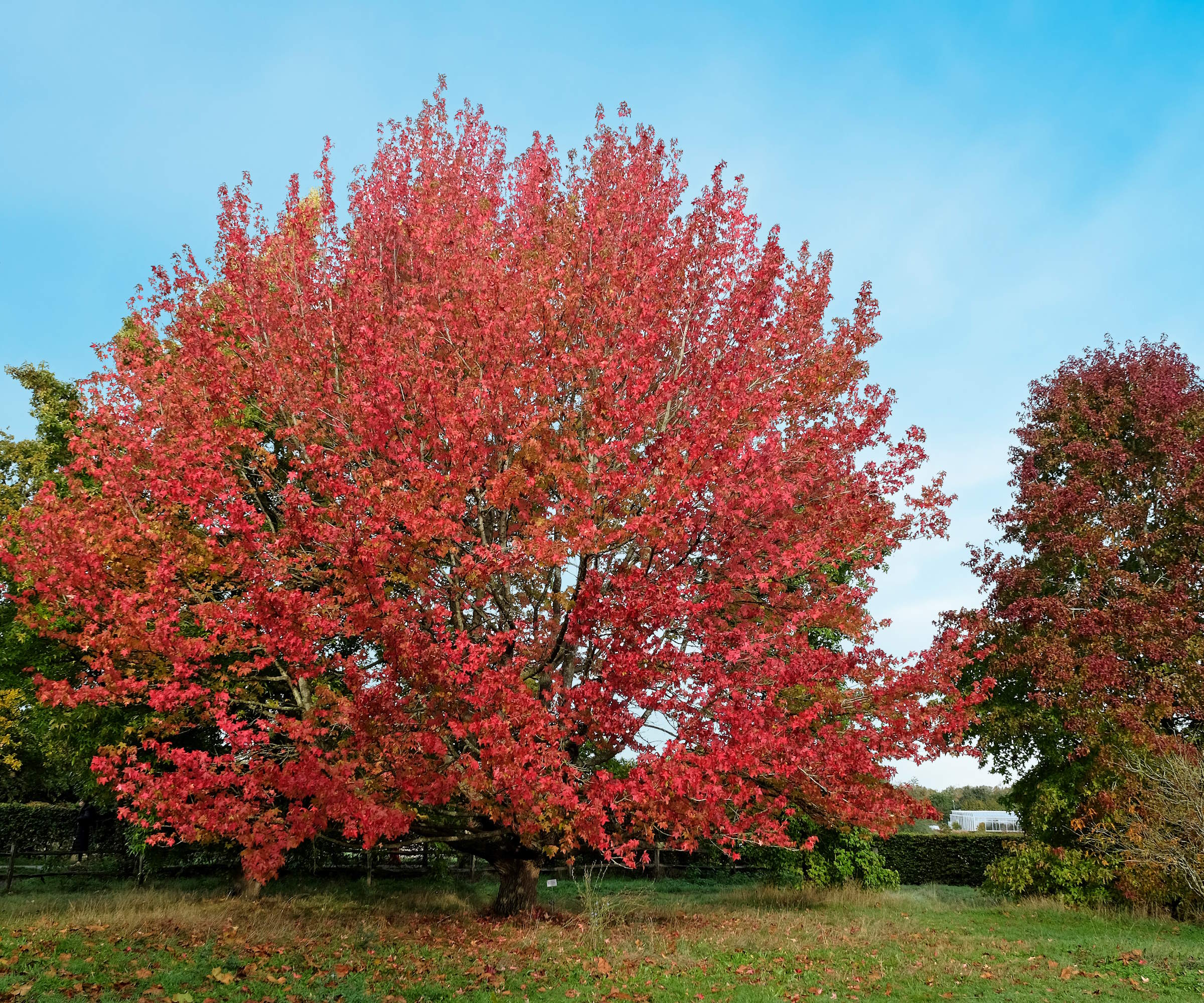
Liquidambar, also known as sweetgum, also provides spectacular fall color when they dazzle in shades of red, yellow, orange, and more. These large trees can grow up to 100 feet tall and do not need much regular pruning, but giving them some attention maintains their shape and keeps them healthy. Given the size they can grow to, pruning is also recommended for safety reasons.
Typical trimming includes removing broken, diseased, or dead branches, and any crossing, crowded, or weak branches. Any suckers from the base also want to be regularly removed.
An established sweetgum can get very large, so you may need professionals to get into the canopy, assess the tree for safety, and do any pruning.
Shop tools for pruning trees in February
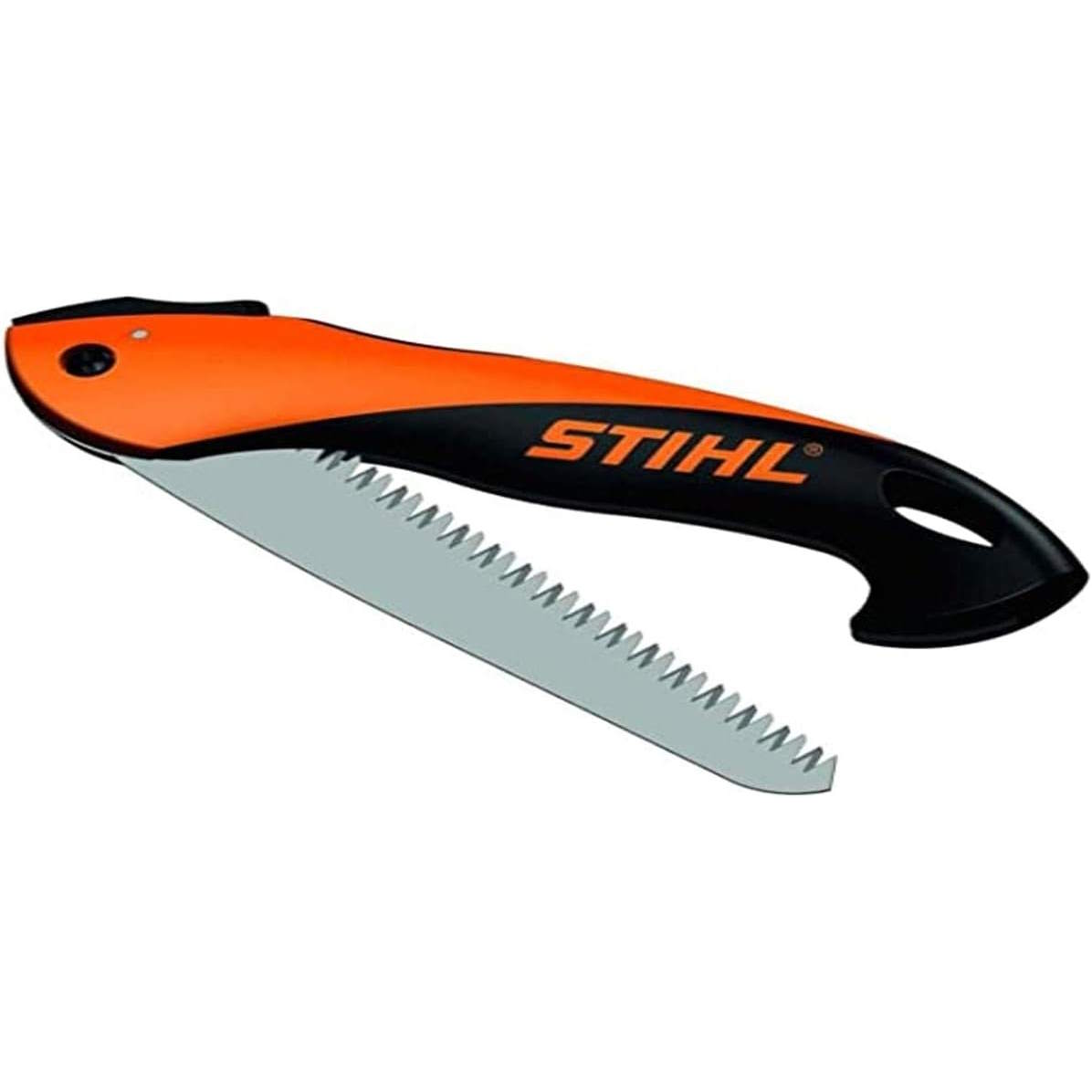
A folding saw ideal for tree cutting. It has three-sided Japanese teeth and can cut branches up to a diameter of two inches.
Of course, there are lots more trees to prune in February that you may have in your garden. For example, it can be an ideal month to prune Japanese maple trees.
When adding any tree pruning to a late winter gardening checklist, always research to ensure that the tree is best pruned during dormancy. Making the tree pruning mistake of trimming at the wrong time of year risks stressing them and leaving them susceptible to pests and diseases.
Sign up to the Homes & Gardens newsletter
Design expertise in your inbox – from inspiring decorating ideas and beautiful celebrity homes to practical gardening advice and shopping round-ups.

Drew’s passion for gardening started with growing vegetables and salad in raised beds in a small urban terrace garden. He has worked as a professional gardener in historic gardens and specialises in growing vegetables, fruit, herbs, and cut flowers as a kitchen gardener. That passion for growing extends to being an allotmenteer, garden blogger, and producing how-to gardening guides for websites. Drew was shortlisted for the New Talent of the Year award at the 2023 Garden Media Guild Awards.
You must confirm your public display name before commenting
Please logout and then login again, you will then be prompted to enter your display name.
-
 'Big results before you know it' – Experts urge you to use the ‘Take Away 10’ method for simple decluttering with zero decision fatigue
'Big results before you know it' – Experts urge you to use the ‘Take Away 10’ method for simple decluttering with zero decision fatigueIt can cut hundreds of items from your home in just a few weeks
By Ottilie Blackhall
-
 Kevin Bacon and Kyra Sedgwick's rustic kitchen island is stunning, but controversial – designers say you can get the look without the hassle
Kevin Bacon and Kyra Sedgwick's rustic kitchen island is stunning, but controversial – designers say you can get the look without the hassleA popular material finds an unorthodox home in the couple's kitchen, but experts disagree on whether it should be used – here's how to do it instead
By Sophie Edwards
-
 7 native perennials to plant in April – for glorious flowering displays to attract bees, butterflies, and hummingbirds
7 native perennials to plant in April – for glorious flowering displays to attract bees, butterflies, and hummingbirdsDiscover some of the best perennials to plant in April to make your garden a hotspot for wildlife
By Drew Swainston
-
 7 shrubs to plant in April to transform beds and borders – including native plants and bushes suitable for dry or wet spots
7 shrubs to plant in April to transform beds and borders – including native plants and bushes suitable for dry or wet spotsThese shrubs can bring flowers, texture, and fragrance, as well as attracting beneficial insects and birds
By Drew Swainston
-
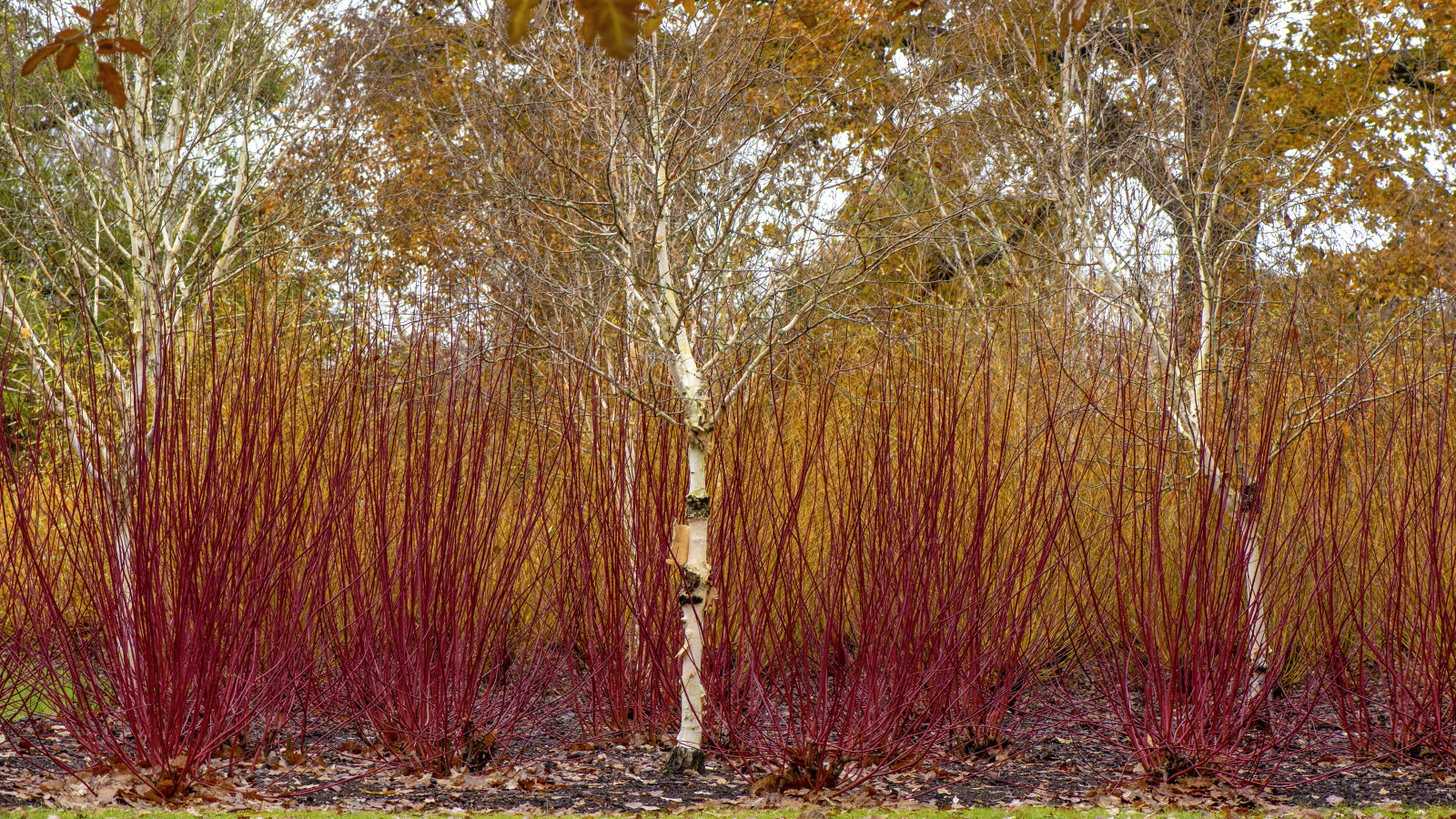 How to coppice trees and shrubs – and the 5 species that will benefit from this historical and super simple pruning technique
How to coppice trees and shrubs – and the 5 species that will benefit from this historical and super simple pruning techniqueCoppicing has aesthetic and practical benefits in a garden
By Drew Swainston
-
 I'm a lawn care expert, and always do these 7 jobs in April to ensure thick, green grass all summer long
I'm a lawn care expert, and always do these 7 jobs in April to ensure thick, green grass all summer longTransform your lawn with these simple yet highly effective April lawn care tasks
By Drew Swainston
-
 Horticulturists urge you to prune these 7 plants in April – for healthy growth and better-than-ever flowering displays
Horticulturists urge you to prune these 7 plants in April – for healthy growth and better-than-ever flowering displaysDiscover a key selection of plants to cut back this month, with expert pruning advice
By Drew Swainston
-
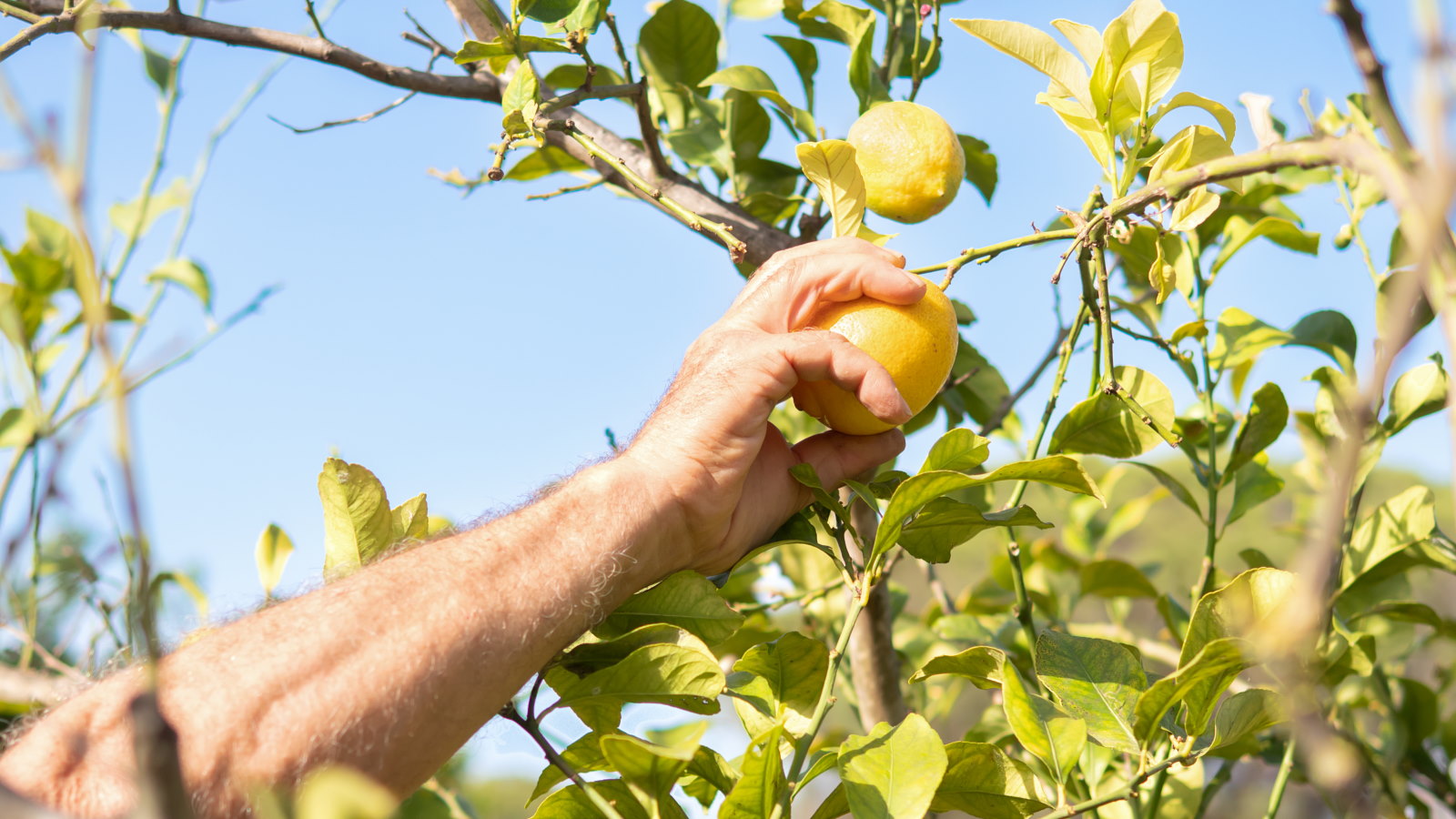 7 fruits to plant in April for years of tasty homegrown harvests, plus expert planting tips
7 fruits to plant in April for years of tasty homegrown harvests, plus expert planting tipsAn exceptional selection of fruit trees and soft fruit can be planted this month
By Drew Swainston
-
 7 dazzling cut flowers to plant in April for bountiful blooms to enjoy in bouquets, vases, and displays this summer
7 dazzling cut flowers to plant in April for bountiful blooms to enjoy in bouquets, vases, and displays this summerDiscover sowing tips from an expert horticulturist
By Drew Swainston
-
 7 of the best vegetables to plant in April, with sowing tips from an experienced grower for bumper harvests
7 of the best vegetables to plant in April, with sowing tips from an experienced grower for bumper harvestsFrom broccoli to zucchini, April is a fantastic time to plant a wide range of vegetables
By Drew Swainston
